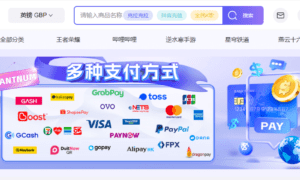In today’s interconnected world, international payments play a vital role in facilitating global trade, travel, and remote work. Whether it’s a small business paying a supplier overseas, a freelancer receiving income from abroad, or a family sending money to loved ones, international payments make cross-border financial transactions possible. But what exactly are international payments, how do they work, and what should you know before sending or receiving money globally?
What Are International Payments?
International payments are transactions where money is sent from one country to another, involving at least two different currencies. These payments typically occur between individuals, companies, or institutions across borders. Because the transaction crosses jurisdictions, it involves several financial systems, exchange rate conversions, and international regulations.
Examples include:
-
A U.S. business paying an Indian software company for services.
-
A student in Canada sending tuition fees to a university in the U.K.
-
An expatriate transferring money home to their family.
International payments can be made through banks, online payment platforms, wire transfers, or specialized money transfer services.
How International Payments Work
Although international payments might seem instantaneous, they usually pass through a complex network of banks and intermediaries. The process typically involves several key steps:
-
Initiation:
The sender provides details such as the recipient’s name, bank account number, and SWIFT or IBAN code. The amount and currency are also specified. -
Currency Conversion:
If the payment involves two different currencies, the funds must be exchanged based on the current exchange rate. Financial institutions often add a margin to the rate as part of their fee. -
Routing Through Correspondent Banks:
Many banks use intermediary or correspondent banks to complete the transaction. This is especially common when the sender’s and receiver’s banks don’t have a direct relationship. -
Delivery to Recipient:
Once the payment reaches the recipient’s bank, it is credited to their account in the local currency.
While modern technology has made cross-border transfers faster and more efficient, international payments can still take anywhere from a few hours to several days, depending on the countries and banks involved.
Methods of Making International Payments
There are several ways to send money internationally, each with its own benefits and drawbacks:
-
Bank Wire Transfers:
Traditional and secure, but often expensive due to high fees and unfavorable exchange rates. Processing time may take several days. -
Online Money Transfer Services:
Platforms like Wise (formerly TransferWise), PayPal, and Revolut offer lower fees and better exchange rates. They’re fast and convenient, ideal for smaller payments. -
International Payment Gateways:
Businesses often use gateways like Stripe, Payoneer, or Worldpay to receive cross-border payments from clients or customers globally. -
Cryptocurrency Transfers:
Some individuals and businesses use cryptocurrencies like Bitcoin or stablecoins to send money internationally. While this can be fast and low-cost, it carries volatility and regulatory risks.
Fees and Exchange Rates
When making international payments, two main costs come into play: fees and exchange rate margins.
-
Transfer Fees: Banks and payment providers charge fees for processing international transfers. These may include sending, receiving, and intermediary bank fees.
-
Exchange Rate Margin: The difference between the mid-market rate and the rate offered by your provider. Even small differences can significantly affect large transactions.
To minimize costs, it’s important to compare rates and fees across providers before initiating a transfer.
Challenges in International Payments
Despite advancements, cross-border payments still face several challenges:
-
Delays: Time zones, banking hours, and compliance checks can slow down transactions.
-
Hidden Fees: Some intermediaries deduct additional fees without upfront disclosure.
-
Compliance and Regulation: Payments must comply with anti-money laundering (AML) and know-your-customer (KYC) regulations, adding complexity.
-
Currency Volatility: Fluctuating exchange rates can impact the final amount received.
The Future of International Payments
The future of international payments is promising. Innovations like blockchain, digital currencies, and real-time payment systems are transforming the landscape. Central banks are exploring Central Bank Digital Currencies (CBDCs), and new networks aim to make transfers instant and transparent. Financial technology (fintech) companies are also reducing costs and improving accessibility for individuals and small businesses worldwide.
Conclusion
International payments are the backbone of global finance, enabling trade, remittances, and global collaboration. As technology continues to evolve, these transactions are becoming faster, cheaper, and more transparent than ever before. Whether you’re a business owner, freelancer, or individual sending money abroad, understanding how international payments work—and how to choose the right method—can help you save time, reduce costs, and ensure your money reaches its destination securely.



































